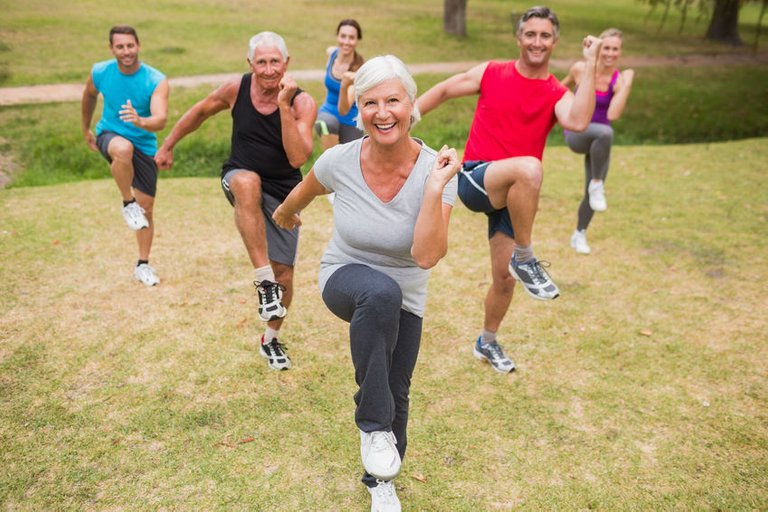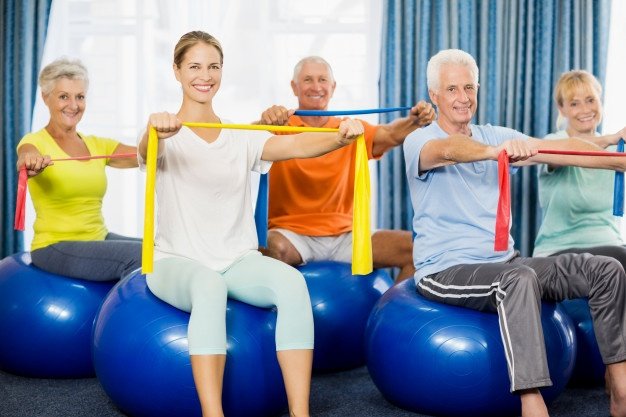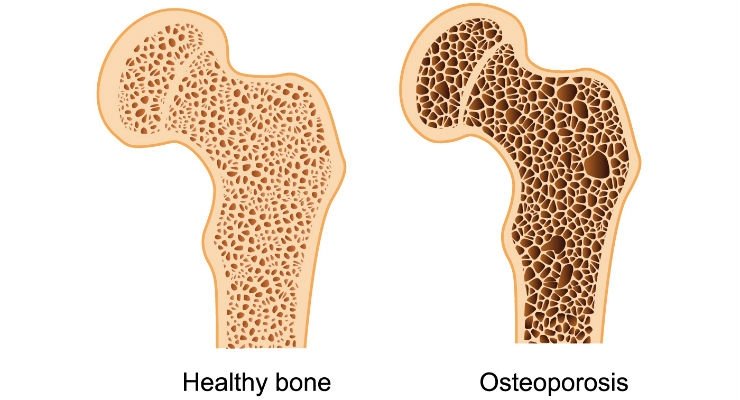Does Sports & Physical Activity Aids in Preventing Osteoporosis?
Does Sports & Physical Activity Aids in Preventing Osteoporosis?

Bone stress often has a negative connotation in our usage. It suggests that something comes under pressure, becomes progressively weaker, and eventually breaks. This may apply to technical constructions, but not to your skeleton. The reason is simple: bone is a living tissue that can react to external influences. If tension and pressure are exerted on it via the muscles, the restructuring and building of bone substance are stimulated and it becomes more stable.
The body keeps a close eye on the skeletal system - special sensors continuously measure how much it is used. If the load on the bones increases, the brain signals that bone tissue is needed. As a result, the body increases the build-up of bone mass, i.e. the activity of the osteoblasts (special bone-building cells). If they have formed so much bone tissue that they are surrounded by it, the osteoblasts transform into so-called osteocytes. From this point on, they are responsible, among other things, for preserving the bone. This system is of inestimable advantage for osteoporosis patients: through sport and gymnastics, they can strengthen their bones and become one counteraction to the progression of the disease.

Physical Activity
Demanding physical work activity can strengthen the bones in osteoporosis just as much as exercise. That is why most of the guides simply talk about training and physical activity. What is good for you personally depends on your age and your physical capabilities. Of course, it is also important whether you “only” belong to the group of people with an increased risk of osteoporosis, whether you already have osteoporosis or have even suffered a broken bone
Do you want to start integrating more exercise into your everyday life? Don't worry, you don't have to become an absolute sportsman right away. Start slowly and find activities that you are comfortable with and that you enjoy - you can then gradually increase your workload. For the best effect on osteoporosis, ideally use sports exercises that put a lot of stress on the bones: for example, gymnastics, strength training, hiking, or Nordic walking are suitable.
Make sure that, despite all discipline, fun is not neglected: Perhaps sport in a group is something for you. Many sports clubs or treatment centers offer special courses for strengthening bones. The general rule here is: No matter what you do, only what you enjoy will benefit you in the long term!

Why therapy is important?
Osteoporosis therapy consists of various measures, which together increase their effectiveness and thus promote bone health. Consider taking medication as an important part of treatment, but it must also be supplemented by others. A healthy diet, a supply of vitamin D and calcium, and plenty of exercises are the most important examples. Here you get an overview of the possibilities of drug and non-drug osteoporosis therapy.
Regular exercise is important to prevent osteoporosis. Physical training ensures that the muscles are strengthened, tension released and the build-up of bone mass is promoted. Mobility and sense of balance improve. Both are important criteria for becoming safer and lowering the general risk of falling. But always remember when doing sports, the focus should always be on having fun. Look for a sport in which you can imagine staying longer on the ball. For example, gymnastics, swimming, hiking, or walking are suitable. It is usually easier to train in a group than alone.
Effective prevention of osteoporosis can be expected above all through an optimization of the diet and an increase in general physical activity. Weight-bearing physical activities are an essential prerequisite for bone health. Regular physical training in the sense of controlled movement therapy or monitored physiotherapy has established itself as an important component in the therapeutic concept.
